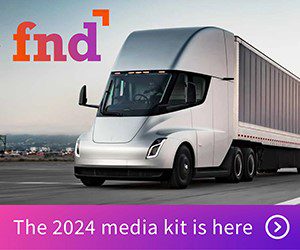Zonar Commercial Fleet Industry Trends and Predictions 2021

Big Changes Coming to Federal Regulations, Safety Tech and Environmental Standards
Fred Fakkema, Vice President, Safety & Compliance, Zonar
- Speed limit mandates could be coming. Under the Obama Administration, FMCSA and the National Highway Traffic Safety Administration suggested a rule to limit top speeds of large trucks and buses weighing more than 26,000 pounds, which would’ve impacted many of the nation’s bus and commercial truck fleets. It would not be a surprise if under the new administration, the measure comes back into focus. Most notably, legislators could agree on a national speed limit for heavy-duty truck speed limiters that does not vary by state.
- Federal Groups Focus on Safety with Driver Assistance Technologies and Compliance. We’ve seen federal groups such as the National Highway Traffic Administration and the FMCSA further their commitment to bring Advanced Driver Assistance Systems (ADAS) to the market, as well as groups within the industry such as the American Trucking Association shape their safety standards around these technologies. We can also expect to see federal groups pick up Obama-era compliance and safety programs, including the FMCSA’s “Beyond Compliance” provisions.
- As regulations push for electric vehicles, infrastructure will need to work hard to keep up. The new administration has discussed plans to ban oil and gas permits on public land, which could result in fluctuating fuel prices, further driving the demand for the electric vehicle (EV) revolution. We’ll need infrastructure to support this growth, especially to serve short-haul electric trucks – currently the best use case for EV. The U.S. power grid in its current state is strained and is not equipped to adequately handle a large influx of electric vehicles.
- Fleets will adapt models to address rising insurance minimums. The new administration is expected to increase insurance minimums, which will put a strain on smaller operators. We will see push back across the industry, and insurance providers will need to create incentives to encourage fleets to leverage safety technology and avoid incurring excess expenses.
Gary Schmidt, Senior Vice President of OEM Connected Solutions, Zonar
- The driver shortage is a challenge that major industry players are taking a very close look at. It’s arguably the biggest challenge the trucking industry will face in 2021. The average age of truck drivers in the U.S. is 55 years old. The current generation of truck drivers are looking to retire in the near future. Fleet providers are hoping that new, cutting-edge technologies like analytics, digital mirrors and self-driving capabilities – coupled with new alternative fuel types like hydrogen and electric down the line – will entice a younger generation to get excited about joining the trucking industry.
- Safety becomes more than a pillar of trucking, it becomes a necessity. There are a handful of safety product features that will be must-have’s in 2021. Collision prevention, blind-spot and driver cameras, over the air speed trimming, and assisted breaking will be key safety components that will be in high demand by the industry. In the past few years, fleet managers have seen the power of safety technology and the cost savings in fines, insurance and legal fees that these technologies can provide on a mass scale. Now there’s a sense of urgency for OEMs to implement even more safety technologies – on the factory floor or through third-party vendor integrations.
- ‘Box agnostic’ is here to stay, but platforms need data interoperability to bring the most value to customers. There’s currently a staggered ‘box agnostic’ rollout strategy in play with TCUs. All the OEMs have started their rollouts with configurations for large sleeper cabs and are beginning to see adoption. But currently, the biggest barrier to widespread adoption is data flow. There needs to be a more seamless and frictionless flow of data, specifically track and trace, from TCUs to TSPs.
- OEMs continue their forward momentum in alternative fuels. There’s been a lot of speculation in the industry on whether the new administration will change OEM engine development plans. Across the board, alternative fuels have already been a big push. A regulation change from the new administration would be a forcing factor, but OEMs have already been diligently working on more environmental and efficient fuel solutions. But if environmental regulations are mandated too soon, it will cut OEMs’ testing and refining process – potentially pushing the industry into an era that infrastructure is not entirely ready to support.
Category: Connected Fleet News, Driver Stuff, Featured, Fleet Diagnostics & Software, General Update, News, Safety, Tech Talk









